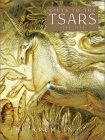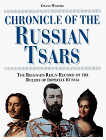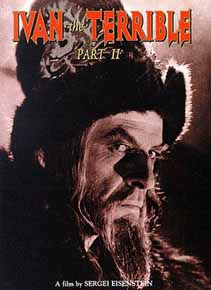There are a variety of opinions about the long-range historical significance of this strange experiment of Ivan's. According to one view, a blend of practical and economic factors and vague plans of a totalitarian state are involved here. Ivan wanted to have an area immediately at his disposal with all intermediate authorities removed. In other words, he may have made a semi-conscious effort to eliminate the feudal structure, what there was of it in Russia. He therefore had to make a clean sweep in order to create a new state on a new social basis.
The oprichnina state was a form of self-government. The crown created a monopoly of all the trade through the oprichnina. The retail trade in liquor was controlled by the state. A new bureaucracy and new state army was created. Newly conquered lands were annexed to the oprichnina and not the zemshchina. There was an attempt to assimilate the varied races and minorities in Russia. The Tartar element was absorbed. Ivan seemed to be trying to create a Great Russian nationality, transcending loyalty to Muscovy. New administrators replaced the boyars and usurped their functions as local administrators.
The oprichnina delivered the final blow to the appanage system. It opened Russia's windows to the East, particularly China and India' It was also a social and political revolution, since Ivan and his oprichniki made violent attacks on the monks and the church. The oprichniki lived a raucous and pagan life of undisciplined exuberance and excess.
 The oprichniki constituted a security police whose relentless aim was to purge the land of treacherous elements. Ivan's victims suffered heartless torture. Many were drowned or strangled or flogged to death; some were impaled, others roasted on a spit, still others fried in large skillets. The entire city of Novgorod was put to torture on the charge that its archbishop was planning to hand over the city to the Lithuanians. Sixty thousand of its citizens were butchered in a week-long orgy. But churchmen, boyars, and merchants whom Ivan suspected of treason were not the only ones to suffer. His favorites, the oprichniki leaders, died in an agonizing torture more fiendish than anything they had devised for their victims.
The oprichniki constituted a security police whose relentless aim was to purge the land of treacherous elements. Ivan's victims suffered heartless torture. Many were drowned or strangled or flogged to death; some were impaled, others roasted on a spit, still others fried in large skillets. The entire city of Novgorod was put to torture on the charge that its archbishop was planning to hand over the city to the Lithuanians. Sixty thousand of its citizens were butchered in a week-long orgy. But churchmen, boyars, and merchants whom Ivan suspected of treason were not the only ones to suffer. His favorites, the oprichniki leaders, died in an agonizing torture more fiendish than anything they had devised for their victims.
Ivan gathered around him at the Alexandrov Monastery, which became his headquarters and residence, a picked bodyguard of three hundred oprichniks whom he clothed in monk's garb and whom he commanded as abbot. His prodigious drinking bouts with his companions alternated with courts of cruelty where he tried out new methods of torture against his unfortunate victims. On occasion the tsar himself led the church service, preaching temperance and virtuous living to his oprichnik-monks and offering prayers for those he had condemned to death.


|







